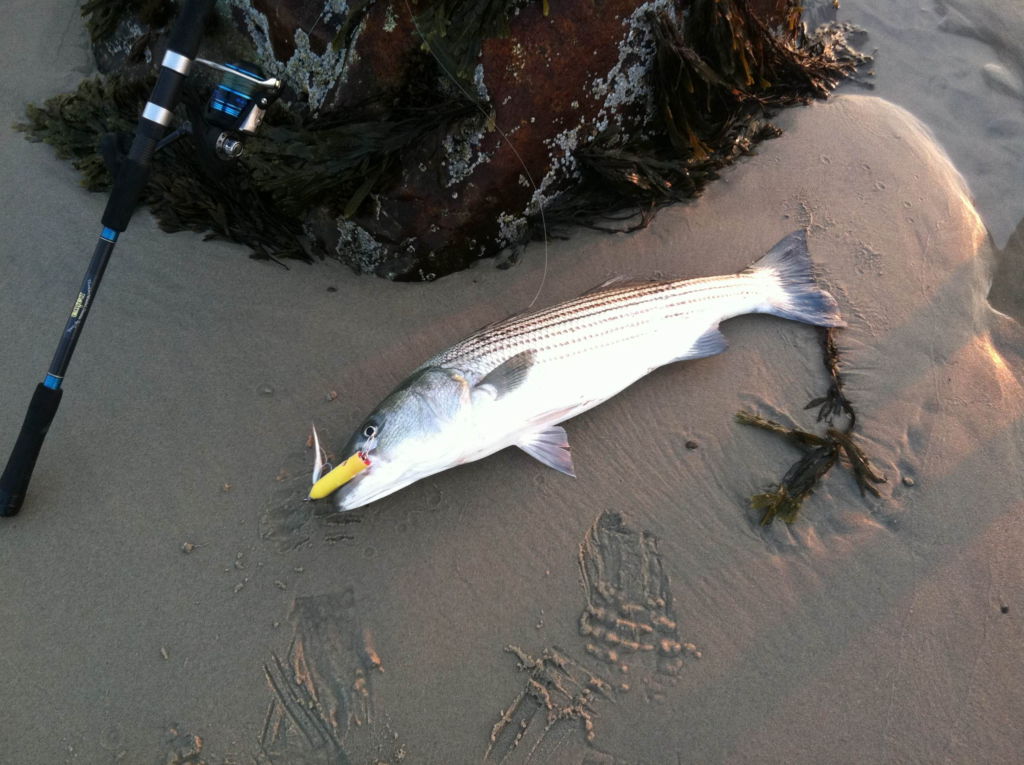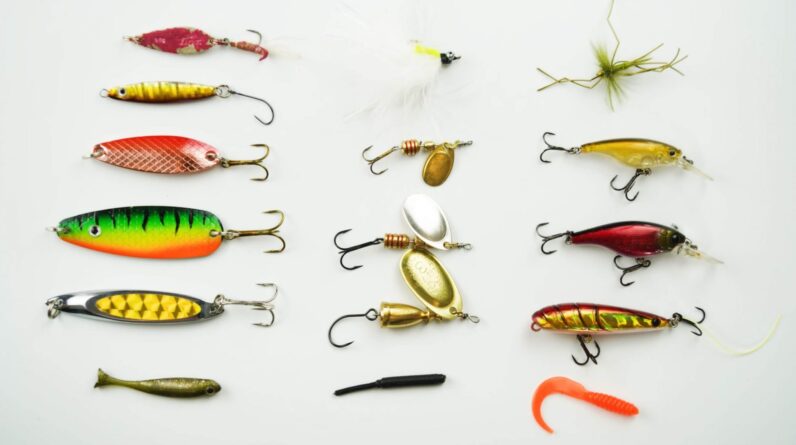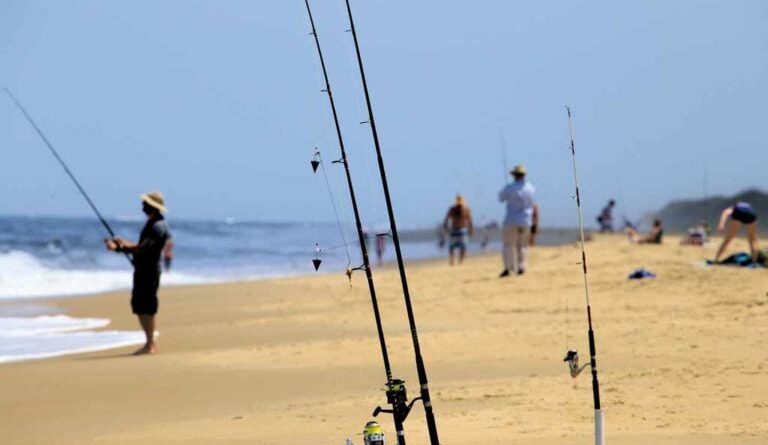Saltwater fishing offers an unmatched thrill for anglers, combining the beauty of the open ocean with the challenge of landing trophy fish. Among the various techniques, using poppers stands out as one of the most effective and exhilarating methods to attract predatory species. Renowned for their unique cup-shaped heads, poppers create splashy, attention-grabbing surface disturbances that closely resemble the erratic movements of struggling baitfish. This lifelike mimicry triggers aggressive strikes from predators such as tuna, trevally, and even barracuda.
For those eager to enhance their saltwater fishing prowess, Cheerfulfisherman.com has crafted this comprehensive guide to highlight five expert tips for fishing with poppers. From selecting the perfect popper for specific conditions to mastering retrieval speeds and angles, this article is designed to arm you with the knowledge needed to elevate your fishing game. Whether you’re a seasoned angler or a beginner, these strategies will help you reel in more success on your next saltwater adventure.

1. Choose the Right Popper for the Target Species
The first step in mastering saltwater fishing with poppers is selecting the right lure for your target fish. Different species respond to varying sizes, colors, and actions.
Factors to Consider:
- Size and Weight: Larger poppers, such as 6- to 8-inch models, are ideal for species like GTs (giant trevallies) and tuna, while smaller poppers are better for striped bass and redfish.
- Color: Match the hatch by choosing colors that resemble local baitfish. Bright colors work well in clear water, while darker hues are effective in murky conditions.
- Material: Wooden poppers create a natural action, while plastic ones are more durable and versatile.
Top 3 Most Used Poppers:
- Halco Roosta Popper 160: Known for its versatility, this popper comes in vibrant colors like H53 Pink Fluoro and R15 Redhead.
- Yo-Zuri Bull Popper: A favorite among anglers targeting larger species, with popular colors such as Mullet and Sardine.
- Nomad Design Chug Norris: This durable and effective popper is available in standout colors like Ghost Shad and Orange Gold.
Pro Tip:
Invest in high-quality poppers like the Halco Roosta Popper or Yo-Zuri Bull Popper for reliable performance. Pair them with strong hooks and split rings to withstand aggressive strikes.

2. Master the Pop-and-Pause Technique
The pop-and-pause method is a classic technique that triggers predatory instincts. By creating rhythmic splashes and pauses, you mimic an injured baitfish, making it irresistible to predators.
How to Execute:
- Cast Long and Accurate: Use a rod designed for casting distance, such as a 7- to 9-foot spinning rod. Aim for structures like reefs, rocks, or bait schools.
- Pop with Purpose: After the lure hits the water, reel in slack and sharply jerk the rod tip upward. This creates a splash and bubble trail.
- Pause and Observe: Let the popper rest briefly. Predators often strike during the pause, mistaking the still lure for an easy meal.
- Repeat the Cycle: Adjust the rhythm based on the fish’s reaction, speeding up or slowing down as needed.
Ideal Conditions:
This technique works best in calm waters where the popper’s action can be easily detected. Early mornings and evenings are prime times when fish are actively feeding near the surface.
3. Use the Walk-the-Dog Technique for Realistic Action
The walk-the-dog technique is another highly effective method to attract fish. It involves making the popper zigzag across the surface, mimicking a fleeing baitfish.
Steps to Perfect the Technique:
- Keep the Rod Tip Down: Position the rod tip close to the water to maintain better control.
- Short, Snappy Twitches: Use quick, short jerks of the rod while reeling in slack. The popper will dart side-to-side in a zigzag motion.
- Maintain Consistency: Keep a steady rhythm. Predators are more likely to attack if the lure’s movement appears natural.
Best Situations:
The walk-the-dog technique shines in areas with scattered baitfish and moderate wave action. It’s particularly effective for targeting snook, tarpon, and bluefish.
Recommended Gear:
- Rod: Medium-fast action spinning rod
- Reel: High-speed spinning reel with a smooth drag system
- Line: 30-50 lb braided line with a fluorocarbon leader

4. Employ High-Speed Retrieve for Aggressive Fish
Fast-moving poppers can incite aggressive strikes from species like mackerel, tuna, and mahi-mahi. The high-speed retrieve creates a sense of urgency, making the lure appear like prey trying to escape.
Technique Breakdown:
- Cast and Start Immediately: As soon as the popper hits the water, begin reeling at high speed.
- Combine Pops with Speed: Incorporate quick, powerful jerks to add splashes and noise.
- Stay Alert: Watch for follows or strikes, as fish often chase the lure for several yards before attacking.
Gear Tips:
Use a reel with a high gear ratio (6.2:1 or higher) to maintain speed. Pair it with a lightweight yet strong rod to reduce fatigue during repeated casts.
5. Target Structure and Current Lines
Understanding fish behavior and habitat is crucial for success. Predators often hunt around structures or along current lines where baitfish congregate.
Key Targets:
- Reefs and Wrecks: These areas provide shelter for baitfish and attract larger predators.
- Drop-offs: Fish often patrol depth changes looking for easy prey.
- Current Edges: Look for rips and foam lines where bait is naturally funneled.
Execution Tips:
- Position Strategically: Anchor or drift to position yourself for optimal casting angles.
- Vary Retrieval Speed: Experiment with slow, steady pops and aggressive retrieves to determine what triggers strikes.
- Watch for Signs: Look for diving birds, bait splashes, or surface boils indicating fish activity.
Safety Note:
When fishing near structures, be prepared for sudden runs from hooked fish. Use a reel with a smooth drag system and keep the line clear of snags.

Essential Gear and Tips for Success
Rods and Reels:
- Choose a medium-heavy spinning or casting rod for versatility.
- Opt for a reel with a high line capacity and smooth drag.
Lines and Leaders:
- Use braided line for strength and sensitivity.
- Attach a fluorocarbon leader to reduce visibility and resist abrasion.
Maintenance:
Saltwater environments are harsh on gear. Rinse your tackle with fresh water after each use and lubricate moving parts regularly.

Conclusion
Fishing with poppers in saltwater is not only exhilarating but also incredibly rewarding for anglers of all skill levels. By mastering five key tips—selecting the right popper, executing the pop-and-pause and walk-the-dog methods, utilizing high-speed retrieves, and identifying prime fishing locations—you can significantly enhance your success on the water.
The choice of popper is crucial, as different designs, sizes, and colors cater to various target species and conditions. Perfecting the pop-and-pause technique allows you to mimic the erratic movement of injured baitfish, while the walk-the-dog method creates an enticing zigzag pattern that predators find irresistible. High-speed retrieves are particularly effective for triggering reaction strikes from aggressive species. Additionally, targeting productive spots such as reefs, drop-offs, and baitfish-rich areas increases your chances of landing a trophy catch.
Whether chasing giant trevally (GTs), tuna, or other saltwater predators, these strategies provide the tools needed to optimize your angling adventures and bring in impressive catches.
So grab your gear, tie on your favorite popper, and prepare for unforgettable fishing adventures. The thrill of surface strikes awaits!






